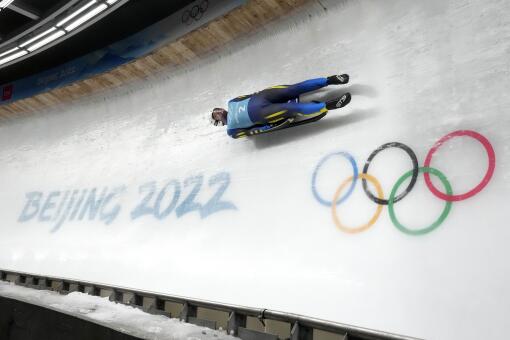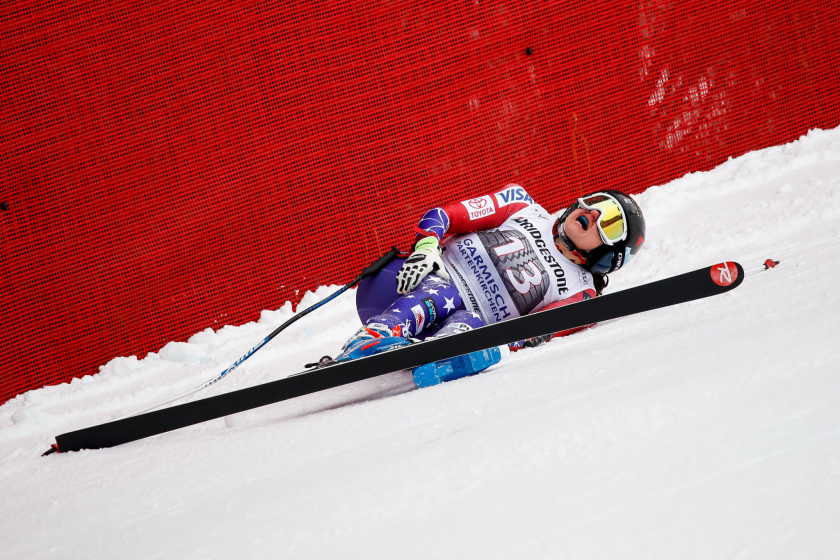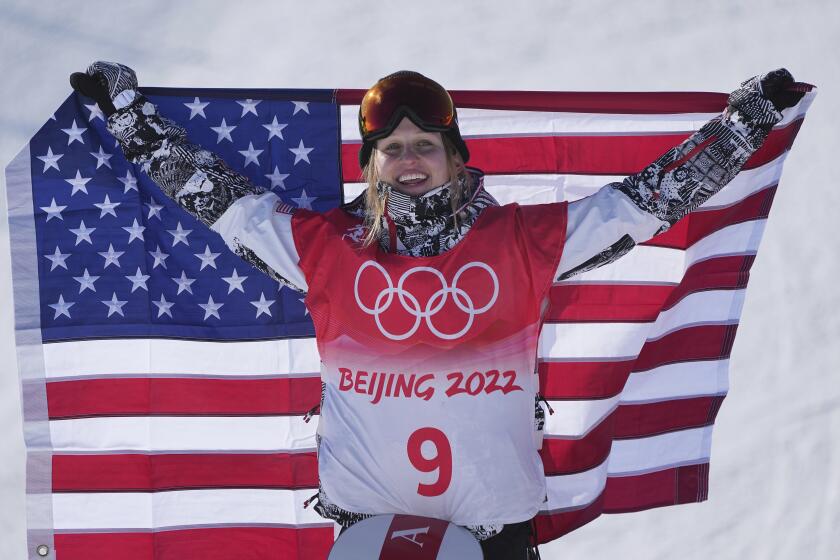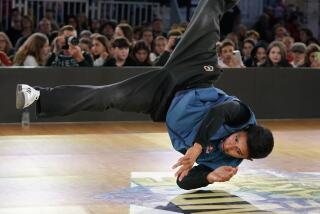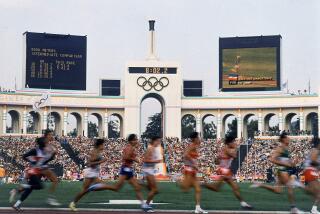Olympic downhill a showcase of speed for world-class thrill-seekers
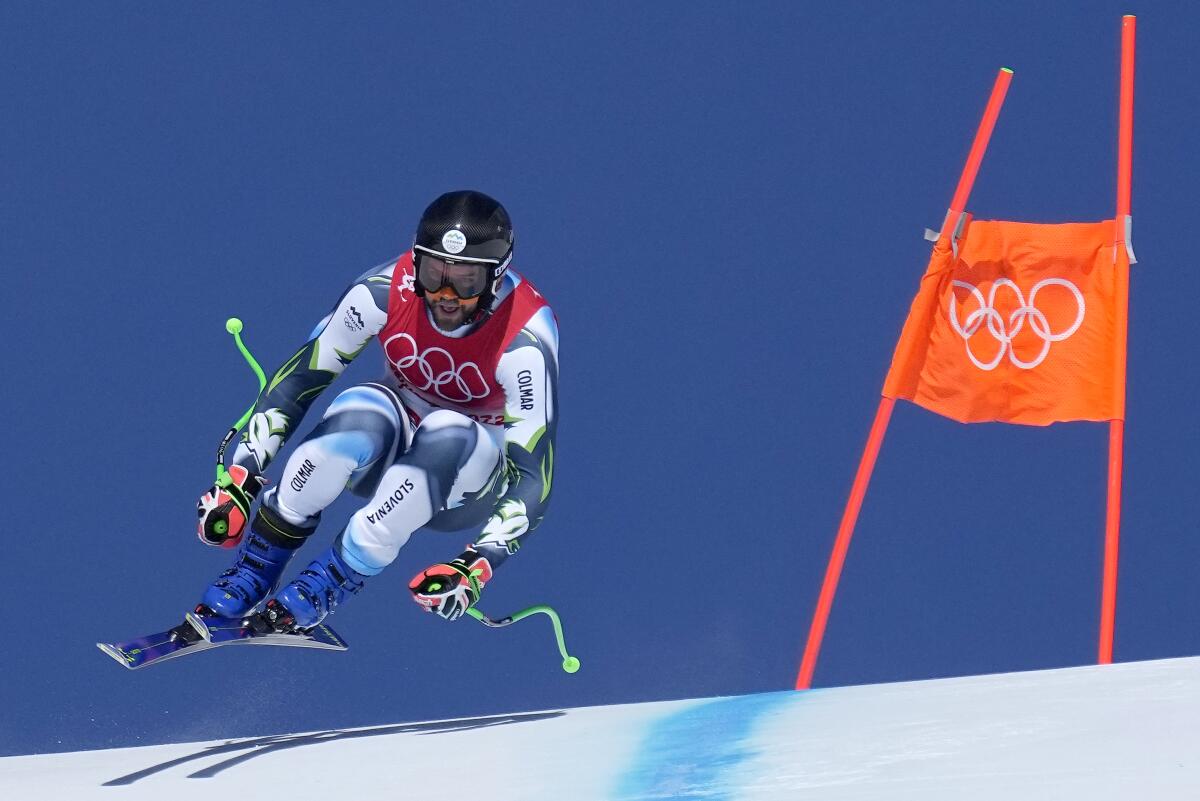
BEIJING — There’s the raw speed of the 100-meter dash, the heart-pounding instant when a figure skater lands a triple axel, the gymnastics routines that seem to defy gravity.
The marquee Olympic events keep us glued to televisions in summer and winter with the ability to transform winners into household names in a blur of power and artistry.
But none of these signature moments are quite like the Alpine downhill.
Sure, the tension-filled seconds when eight sprinters aching to earn the title of world’s fastest man or woman back into their starting blocks before the gun sounds for the blink-and-you’ll-miss-it 100 is a defining part of every Summer Games.
The defining beat-the-clock event at the Winter Games is about a different kind of speed. This is speed — sometimes topping 90 mph — that’d earn you a hefty traffic ticket. Speed that continues for the all-out ride through subzero temperatures and down the side of a mountain that takes almost two minutes. Speed with only a crash helmet, skin-tight racing suit and a bit of padding for protection. Speed that leaves racers a split-second from victory — or from spinning out of control and into the orange safety netting that might save your life but won’t prevent knees or legs from being ripped apart.
The 100, part of the Summer Olympics since the modern Games started in 1896, has earned its place as the answer to a fundamental question. Who is fastest? But it’s a race in a straight line, on a surface without variables, finished in the time it takes to hang a medal around the winner’s neck, where the worst-case injury is a blown Achilles tendon or pulled hamstring.
The downhill, which was canceled Sunday for the men because of high winds at Yanqing National Alpine Center, is a test of nerves and reflexes and stamina that’s become a must-watch part of the Winter Games.
This isn’t a race for the faint of heart. But it is a place for big personalities, big risks and, for the skier with the right blend of skill and luck, a big reward.
“It has enjoyed a confluence of great TV images, a glamorous cast of egomaniacal stars — like sprinting — who make for good soap opera, an ability to communicate to audiences the sensation of extreme speed, and a multi-billion dollar global conglomerate that has for decades sold the sport as an emblem of post-industrial affluence,” said Mark Dyreson, a Penn State professor who studies the Games. “Stir those ingredients and you get the perfect ‘spectacle’ for Olympic extravaganza.”
The Winter Olympics provide all sorts of creative ways for athletes to put their lives on the line. Headfirst and inches from the ice on the skeleton. Speedskating pile-ups with a tangle of bodies and knife-sharp skate blades. Ski jumpers soaring more than 300 feet. Rocketing through a mile-long course, complete with 16 curves, in a bobsled.
“I’ve been in a bobsled before and I don’t think they could do this,” U.S. downhiller Travis Ganong said. “You can go along for a ride in that. Downhill skiing is intense.”
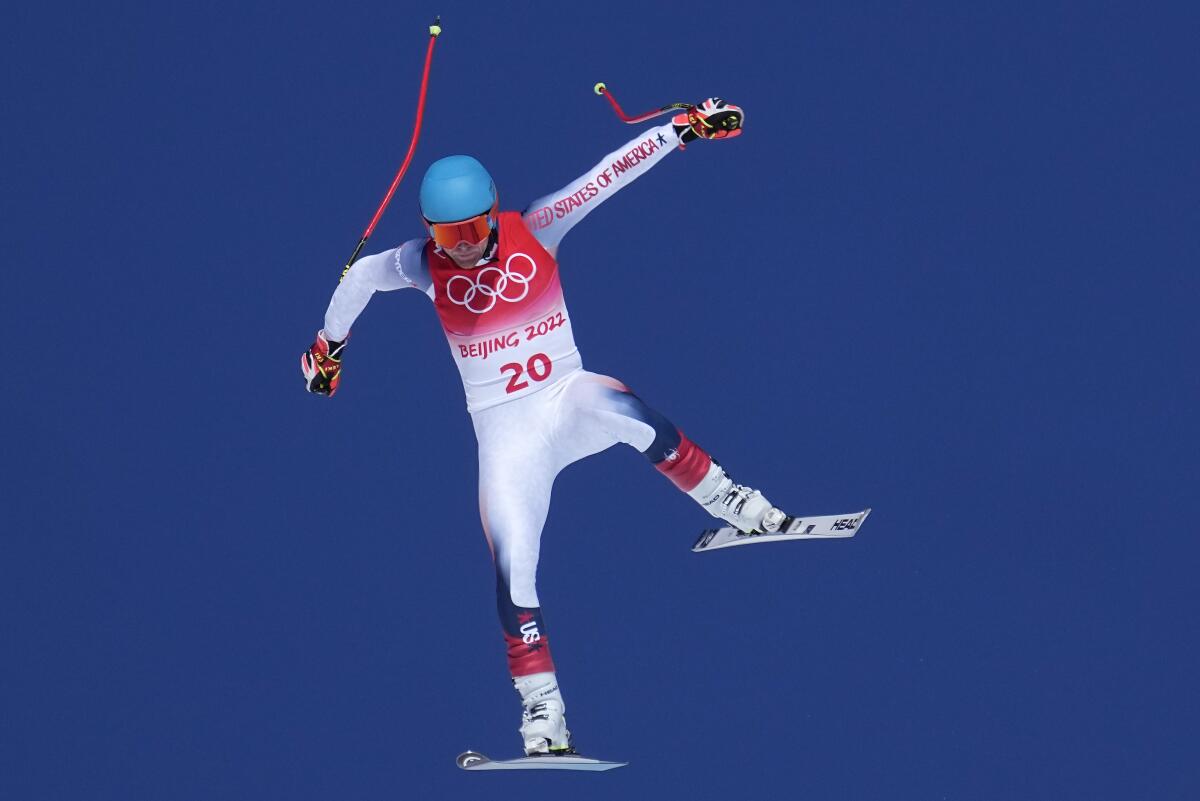
Unlike the 100’s position as a centerpiece of the Summer Olympics since the beginning, the downhill is a relative newcomer. It debuted at the Winter Olympics in St. Mortiz, Switzerland, with Frenchman Henri Oreiller winning by four seconds. The race quickly took root as skiing became a popular post-war pastime.
Jean-Claude Killy, who won downhill gold at the Olympic Games in Grenoble in 1968, once compared to the event to “going down a flight of stairs on a banana peel.”
The brutal simplicity of the downhill — who can get to the bottom of the two-mile track quickest — belies the complexity of navigating weather (gusting wind is expected to be a constant problem at Yanqing), type of snow (the entire surface is man-made since the area gets less than eight inches of snow each year), maintaining aerodynamic form to reduce drag (and not lose precious seconds) while navigating the course’s quirks (the men’s competitors had two training runs to familiarize themselves with the downhill course that didn’t host any test events because of the pandemic).
“You’re going to need some luck on your side to not get totally screwed by the wind,” U.S. downhiller Bryce Bennett said.
Olympic skiers must endure falls and crashes, often leaving them with gruesome and painful injuries. But in their minds, the reward is worth the risk.
On television, the event can appear deceptively calm, even peaceful, as skiers ride the line between pushing hard — but not so much that they lose control. According to injury surveillance data the International Ski Federation collected from 2006 to 2019, most Alpine skiing injuries on the World Cup circuit came from the speed disciplines: super-G and downhill.
Embracing that kind of risk is part of the bargain if you’re going to chase a spot on the podium.
Bennett, a Tahoe City native, won the World Cup downhill in Val Gardena, Italy, in December to end an almost five-year drought for the U.S. men in the event historically dominated by Europeans. He said afterward that he felt a “little wild” coming down the course.
Tommy Moe won downhill gold for the U.S. at Lillehammer Games in 1994 and later said, “I was like, if there’s a time to take the most risk it’s now. I might never have this opportunity again. I was skiing well that year. I said, ‘I’m either going to have a great run or I’m going to crash.’ That’s the mentality you have to have.”
Julia Marino earns silver in snowboard slopestyle for the first U.S. medal of the Beijing Olympics as defending gold medalist Jamie Anderson fails to medal.
Bill Johnson, the only other American man to capture downhill gold at the Olympics, took a similar all-out approach at the Sarajevo Games in 1984, which included predicting his victory before the race.
“They might as well give it to me now,” he said at the time.
Lindsey Vonn has the lone U.S. gold in the women’s downhill from the Vancouver Games in 2010. She retired in 2019 as the winningest female ski racer in history. But the thrill of the downhill is difficult to replace.
“I just found new ways to challenge myself that’s not skiing down a mountain at 85 miles per hour, but is still very rewarding,” she said.
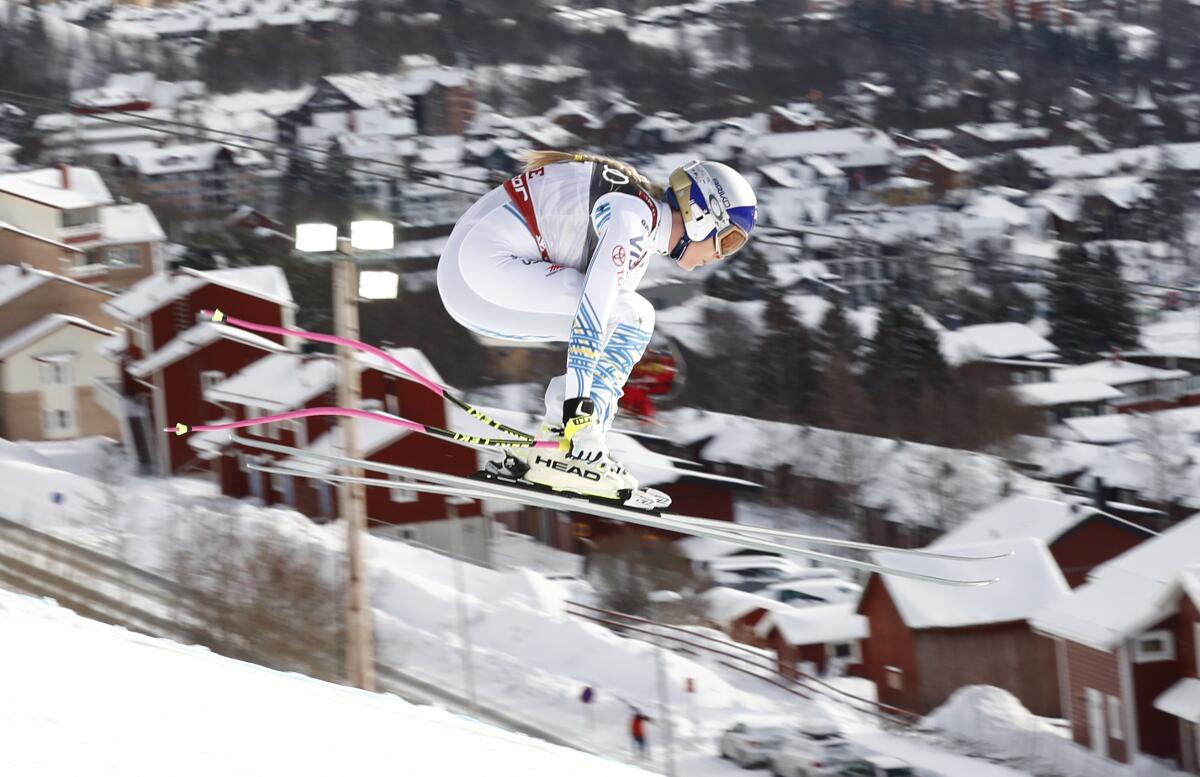
Christian End, an associate psychology professor at Xavier who studies sports, believes the accessibility of skiing has played a significant role turning downhill into a marquee Olympic event — even if competitors are doing things that leave the average recreational skier’s jaw on the floor.
“More people can probably empathize with downhill skiing than other events,” End said. “Am I more likely to find a place to run the 100 meters or curl? More likely to play soccer where I need a ball and a goal or bobsled? Of the winter sports, skating and skiing are probably the most accessible. Skating often requires equipment, a partner, direct competition and rink time that is under great demand. Skiing requires the equipment, snow, and a slope to compete against. … Fans who have actually had access to the sport, skiing, will probably be able to appreciate the Olympic athletes’ skills and abilities to a greater extent than other sports that are less accessible and thus skiing will be more popular.”
One by one, if all goes well, the men’s competitors will shoot down the final hill and into the barren canyon for the finish and stop in a spray of man-made snow. Music will pound. The handful of fans allowed to attend inside the Olympics bubble will cheer. No one will be able to look away.
More to Read
Go beyond the scoreboard
Get the latest on L.A.'s teams in the daily Sports Report newsletter.
You may occasionally receive promotional content from the Los Angeles Times.
